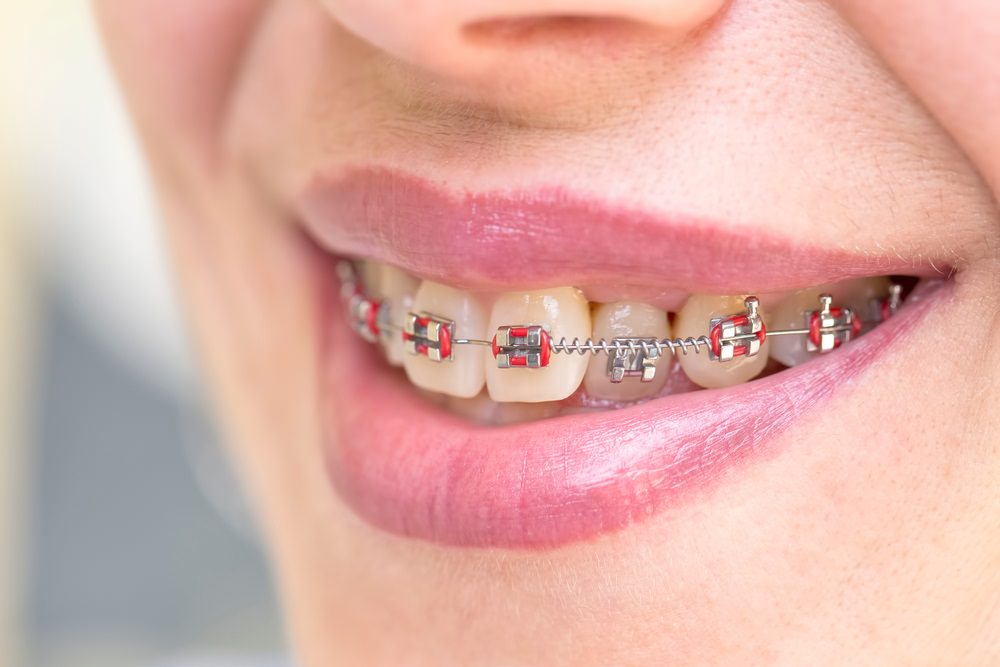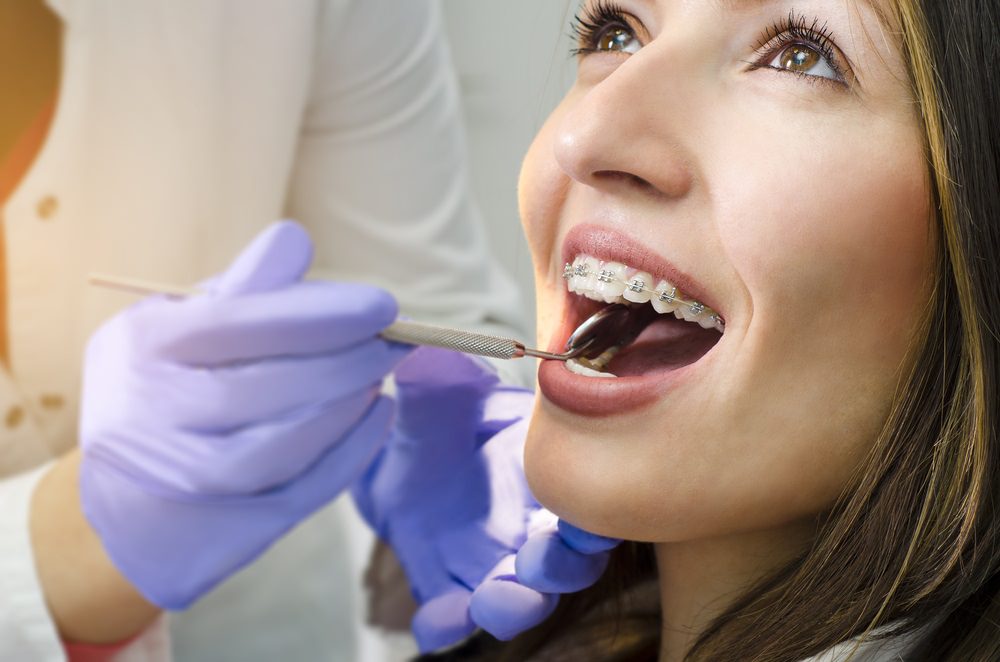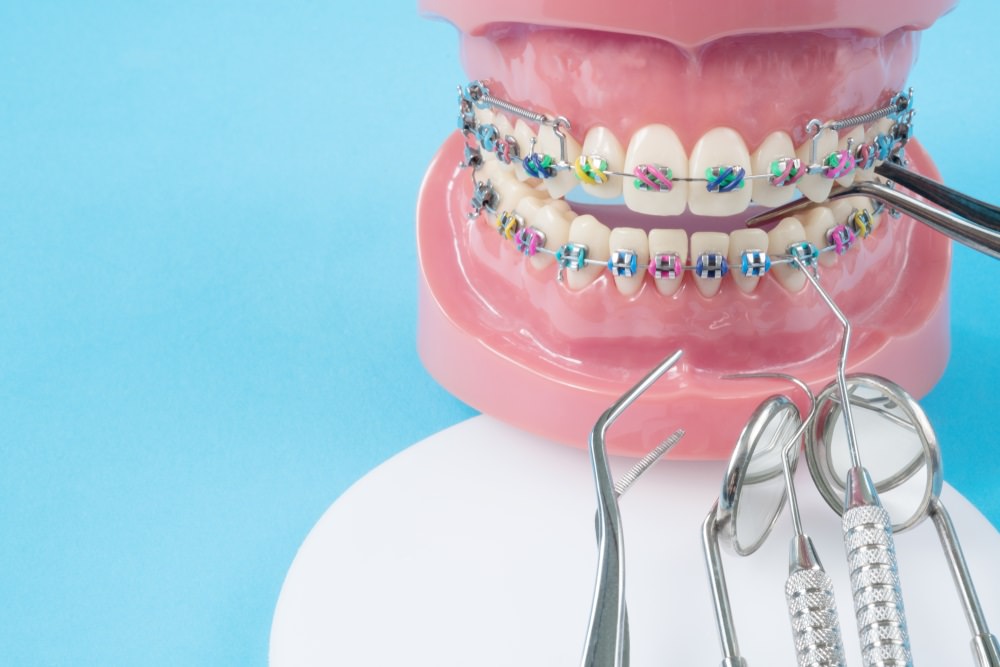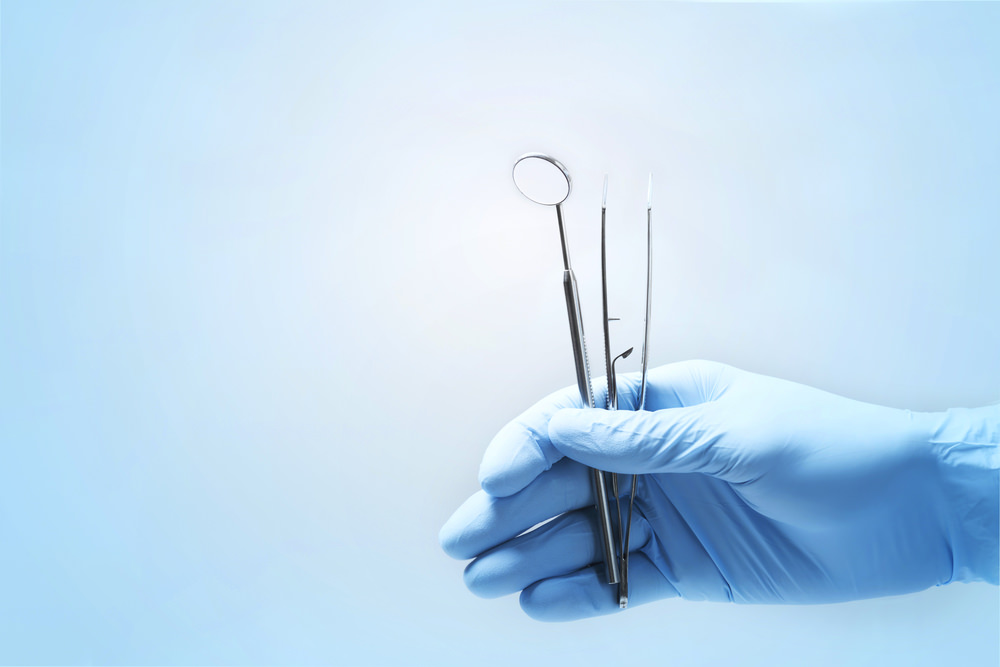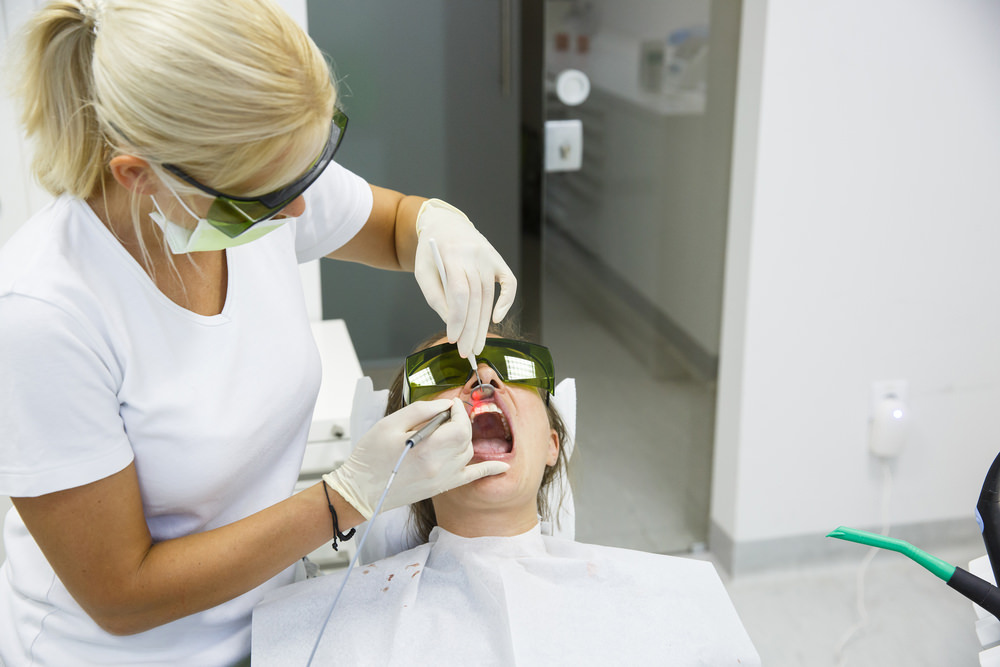What Is Orthodontic Treatment?
A referral for the orthodontist can be daunting for both children and adults, and it’s important to understand the difference between a dentist and orthodontist and what they can help you with.
An orthodontist is a specialist you may be referred to for certain work.
There are many in each State and Territory across Australia that can offer assistance in areas such as braces, retainers and the like.
It’s useful to understand what an orthodontist can help you with and what training they have.
What Forms Of Procedures Do Orthodontists Cover?
Orthodontics is the study and disciple of teeth in their position in the jaw and the jaws in relationship to the rest of the skull.
Dentists are trained in all aspects of teeth position and tooth repair.
From the gums, muscles, bone and teeth and the interrelationship to each other.
Dentists can take further study and concentrate only on one aspect of the mouth and surrounding tissues.
Just as doctors of medicine can concentrate on a particular organ or part of the skeleton to become extremely familiar with and specialise in maintaining health and vitality.
So a dentist who is interested in the position and alignment of teeth can undergo further study and become an Orthodontist.
Orthodontists are essentially dental specialists trained in the alignment of teeth in relationship to the jaws.
The teeth in relationship to the face for esthetic and functional irregularities.
Orthodontists may also specialise in the way the lower jaw is aligned to the skull.
Ultimately an orthodontist will look at the harmony of the face and align the teeth to give you the greatest advantage from an esthetic and functional point.
A dentist will monitor and check children’s teeth as the child develops.
Certain parts of the growth of the child’s mouth may need to be guided in cases where the permanent adult teeth are not able to erupt in their most favourable position.
Much has changed in the area of growth guidance.
In the old style of orthodontics, a dentist would wait for a child’s baby teeth to be lost and all adult teeth to erupt.
If there was a problem in the arrangement of the adult teeth then the patient would be referred to an orthodontist.
If there was not enough space for the adult teeth then the orthodontist may remove some of the adult teeth to make the space for the remaining teeth and straighten the teeth with braces.
However, in the past 30 years, dentists have been more aware of the need to offset growth pattern irregularities of the jaws in order to fit the teeth into position in an effort to not have adult teeth removed in order to make space.
To make it simpler the dentist may create space by using dental appliances by the alignment of the jaws and ultimately the adult teeth would have space and then the dentist would refer to the orthodontist to straighten the teeth.
So the treatment options of the past 30 have changed greatly due to the new treatment options available.
Dental Treatment Plans
A dentist may diagnose and uncover a potential problem.
Since a dentist has the ability to see a child early in their development such as:
- A baby having feeding difficulty.
- Thumb sucking.
- Swallowing irregularities.
- Tongue-tie
- Speech irregularities.
A dentist may intervene and ensure that the parent understands the consequences of the potential interference with the development of the face.
So a dentist may monitor and intervene at stages of growth that is simple to change before more damage is done by neglecting such symptoms from an early age.
As with adults if a thorough understanding is not achieved that the dentist may fail to diagnose and therefore fail to refer.
This is the reason why this disciple of dentistry needs both the intervention of dentists as well as specialist orthodontists.
So the benefits of receiving orthodontic treatment have to be thoroughly explained so that your expectations and consequences can be explained thoroughly.
An orthodontist and or dentist who treats children may be able to guide the growth of the face and jaws.
However, once the growth of the face is complete the orthodontist may guide a surgeon to alter any skeletal abnormalities.
So if a surgical approach has been elected after a thorough investigation then the orthodontist may work in conjunction with a surgeon to obtain the optimal result.
A dentist/orthodontist team may also join the Ear Nose and Throat specialist to correct any issues with Airway, Eustachian Tubes, allergies and breathing difficulties.
Since the position of the lower jaw affects the size and opening of the airway, it is imperative that the airway be evaluated by a dentist very early in the child’s development.
If the Child’s airway is restricted or compromised then sleep will be affected.
If a child’s sleep and the airway are affected this may lead to developmental and growth factors in the overall health and vitality of the child.
So to have the optimal Treatment plan a dentist will coordinate to ensure that your child or your mature mouth has the best possible care from the best clinicians that you can afford.
When a treatment plan is formulated then the size, width, position and pathology of the teeth are looked at.
This is all done scientifically and in relationship to the harmony of the face with the size and shape of the teeth.
Many factors are addressed and not merely just to straighten teeth.
That brings the other issue of cost.
Cost Discussed
If you visit the specialist then you will pay for the extra training and the cost will be in line.
However when a family has multiple orthodontic needs of the various family members then the costs may become out of reach.
The same will apply if you live in regional areas and in suburbs that are not well serviced.
Since Specialist care may be difficult to access then the general practitioner may undergo the necessary training to ensure that the best care possible can be bought to the patient.
As the treatment plan is formulated Diet, Sleep, Oral hygiene standard and patient compliance is looked at and discussed.
It is imperative that no sugary drinks or food are consumed as the area of the tooth under the brackets is protected and the exposed area of the tooth may lose calcium due to the diet and/or tooth brushing habits.
The exposed area of teeth may become decayed or lose calcium causing a difference in the colour of the teeth once the brackets are removed.
Because the braces in the mouth take up space and can become areas where debris and food particles can lodge decay can be caused.
Therefore it is imperative that this is addressed at the beginning of treatment.
Also, sleep is important as growth factors and regenerative factors happen during sleep so it is imperative that good habits are adopted when undergoing orthodontic treatment.
Tool/Implements Used By A Dentist Or Orthodontist In Moving Teeth
Most people immediately think ‘braces’ when they hear the word orthodontist, however, there are many tools/implements that a dentist or orthodontist may employ to help you realign your teeth or jaw.
Braces
Metal or ceramic braces (brackets) involves placing/gluing a bracket to each tooth.
The brackets do not move teeth but a wire is inserted into every bracket placed.
The wire is a special metal which wants to retain its original shape of an arch.
As the wire strains to retain its original arch shape it pulls and pushes the teeth that are attached by the bracket into the shape of the arch.
The metal bracket may be smaller as metal is much easier to handle and can be thinner due to its strength.
However, if there are concerns with Esthetics then Ceramic braces may be chosen. Ceramic brackets are bulkier but then can be see through.
The brackets are left in place throughout the treatment but the size, shape and density of the wire may be changed as the wire does all the work.
Regular reviews and maintenance is mandatory and cannot be left unattended as the wire is long-acting and strong and may take the teeth out of alignment if left unattended.
The new style wires are gentle yet strong and may even be able to develop the size and shape of the jaw bones depending on the age of the patient and the original shape of the arches.
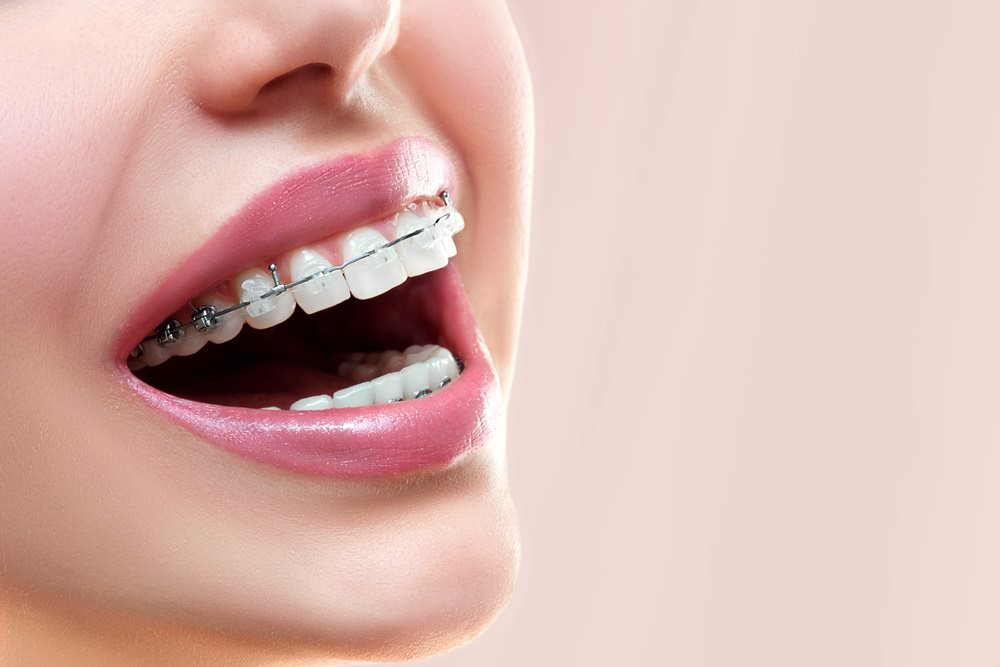
Ceramic braces are another option
Lingual
Lingual braces are a more invisible option for braces to align your teeth or bite.
However, they are still made up of brackets and wires, requiring tightening by an orthodontist and left on for a similar amount of time.
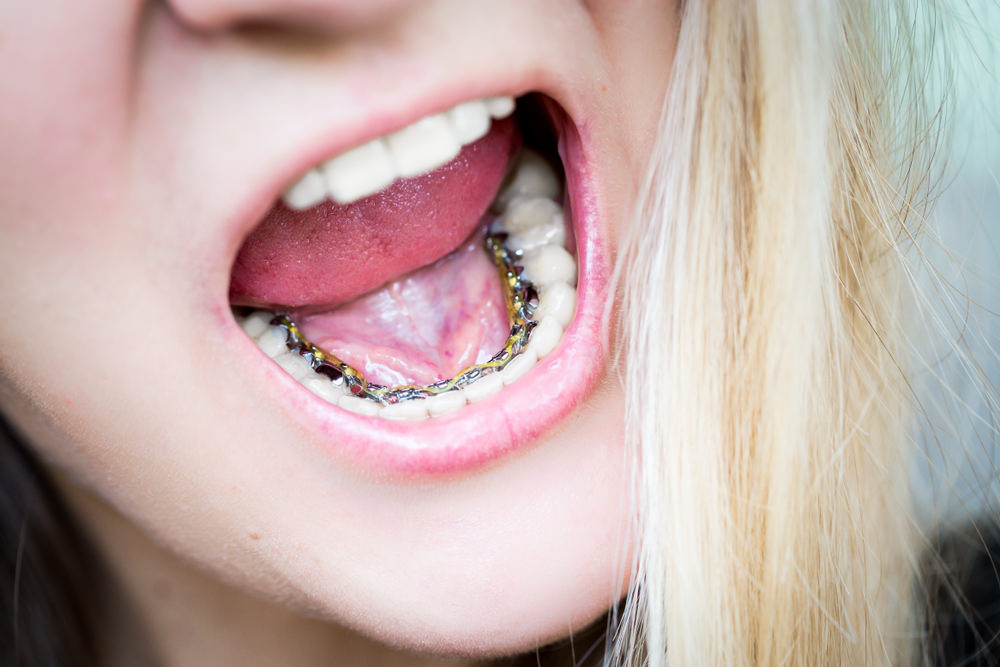
Lingual braces are attached to the back of your teeth
These brackets are attached to the back or inside portion of the teeth not the front of the teeth as metal or ceramic brackets are.
These brackets are used when esthetics is a major concern or the patient prefers this type of treatment.
Using the lingual brackets can be tricky and a well-trained operator will need to be found.
The cost may be higher due to the complex maintenance of these brackets.
Clear Correctors – Invisalign
This used to be known as Invisalign.
But now many more companies are flooding the market.
There are offices which only need to take a mould/impression of the teeth and jaws.
The information is sent to a Specialist orthodontist who measured, diagnoses and sends back a treatment plan.
Once the patient is thoroughly informed an option is given with the relevant prices to get the full sent of Clear correctors for the entire treatment.
The Clear Corrector offices are there to monitor and guide the treatment.
Many dentists are now taking this treatment option and using Clear Correctors as the majority of the work done is by computer and a specialist orthodontist who is easily contactable.
Since this is a new treatment modality not much is known about the failures or problems encountered.
Invisalign can be utilised for simple and complicated alignment issues, however, are often more expensive due to the constant need for replacement aligners.
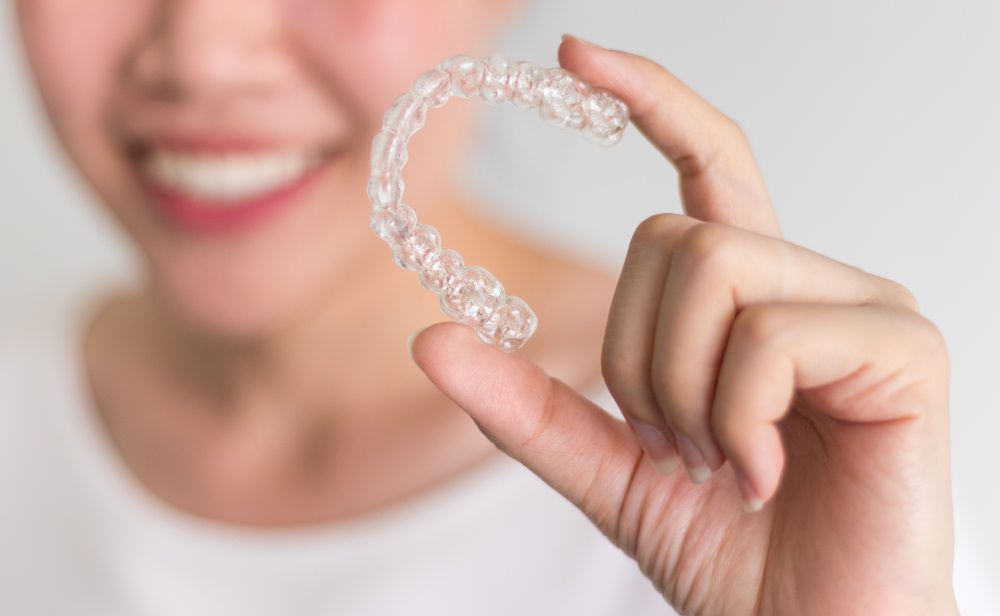
Invisalign has been the go-to option for clear aligners
Removable Dental Plates
Removable plates can be used for minor alignment and bite issues.
It is usually used for a growing child to guide the growth and position of teeth.
This option is available but compliance may be an issue as the child could lose or break the plate.
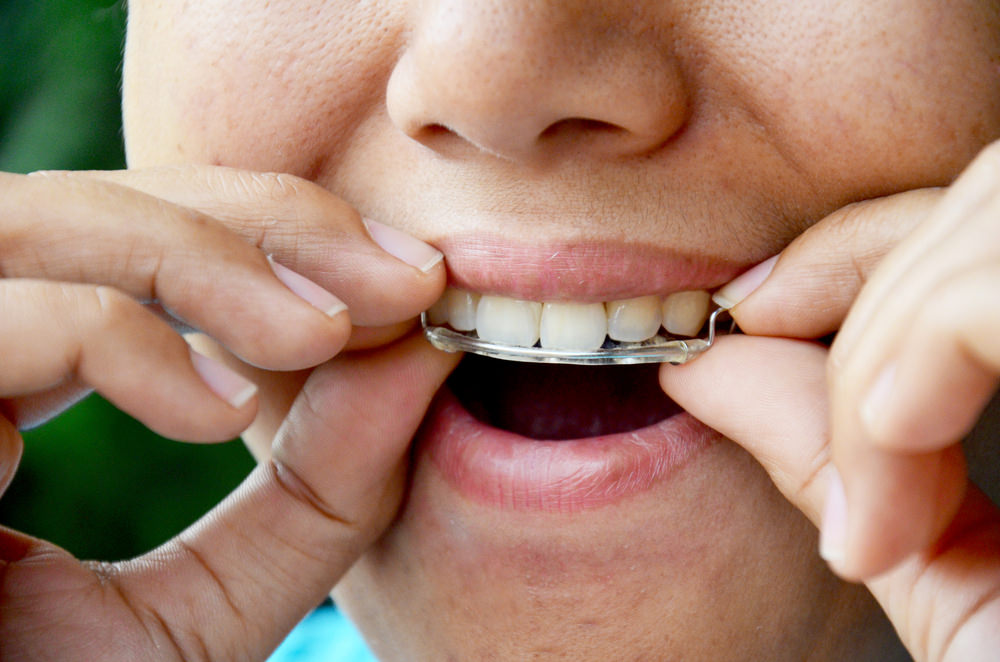
A removable dental plate
Permanent Hyrax Expander
If your child’s diagnosis is lack of development of the upper jaw and appliance can be glued into the mouth and a screw attached.
The parent will then move the screw of the plate to gradually expand the upper jaw to ensure sufficient space is available for the new incoming teeth.
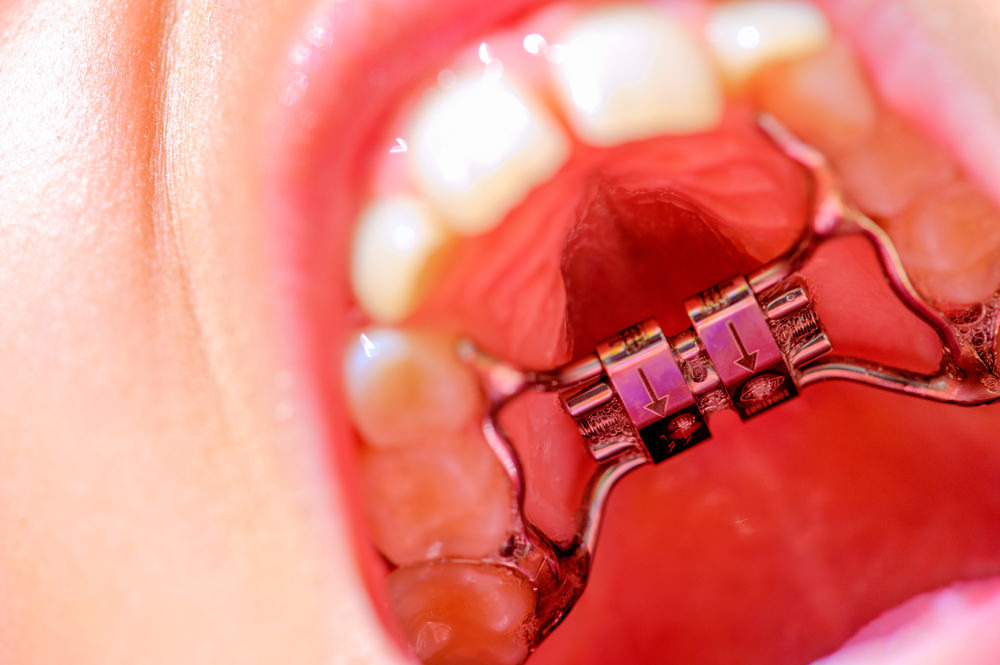
Permanent Hyrax Expander
Retainers
Any tooth movement can relapse if the soft tissue forces are not rectified such as tongue position and shape of tongue, lips and muscles of biting exert a lot of pressure.
When a child is sleeping the usual swallowing patterns moves the sutures of the skull to enable sleeping and optimal function.
When the teeth are moved into position then the use of a retainer is mandatory to ensure that things stay stable.
Your clinician will advise you on the correct wear of the retainers as every case is different.
A permanent wire/retainer may be attached to the teeth as children are inclined to forget to put their retainer into their mouth and bad habit of neglecting to retain the new position may ensure.
Dentist and Orthodontists have been doing this treatment option for a long time since it was under the Licence of Invisalign but the practitioners had to be trained and registered with this Treatment Model.
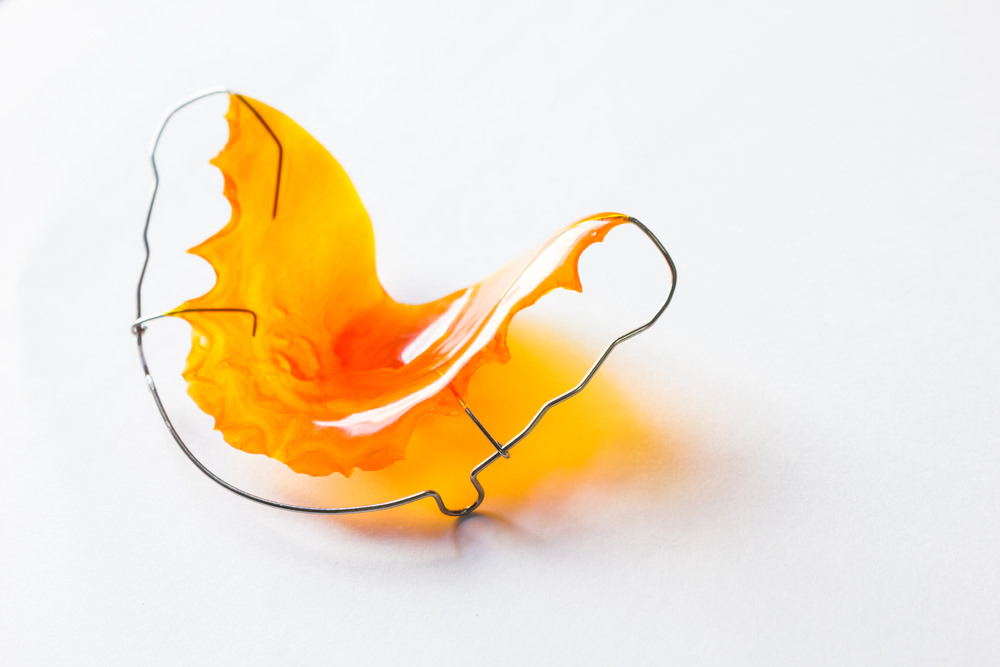
A removable dental plate
Headgear
Headgear is an orthodontic appliance that is not just seen in the mouth to correct bite and support jaw alignment.
There are several types and most are recommended for children whose jawbones are still growing.
Headgear is recommended for children with their bite severely out of alignments such as classes two and three malocclusion misalignment.
This particular option does sit inside and outside of the mouth – with a head cap, straps, facebow, elastic bands, tubes and hooks, chin cup, forehead pad and mouth yoke and sometimes braces.
There are three types of headgear: cervical pull for malocclusions such as protruding top jaw and front teeth or to correct an overbite.
The high pull is used to also correct a protruding top jaw and front teeth – often used in children who have no contact between the top and bottom front teeth or excessive jaw growth in the back of the mouth.
Reverse pull – facemask, is used for an underdeveloped upper jaw or an underbite.
Whilst wearing headgear, you should remove it while eating and drinking without a straw and chewing gum or hard foods should be avoided if there are braces attached.
Headgear is only worn while a child’s jaw is still developing, for 12-14 hours a day over one to two years and the child should avoid most sports and rigorous activities that could dislodge the headgear.
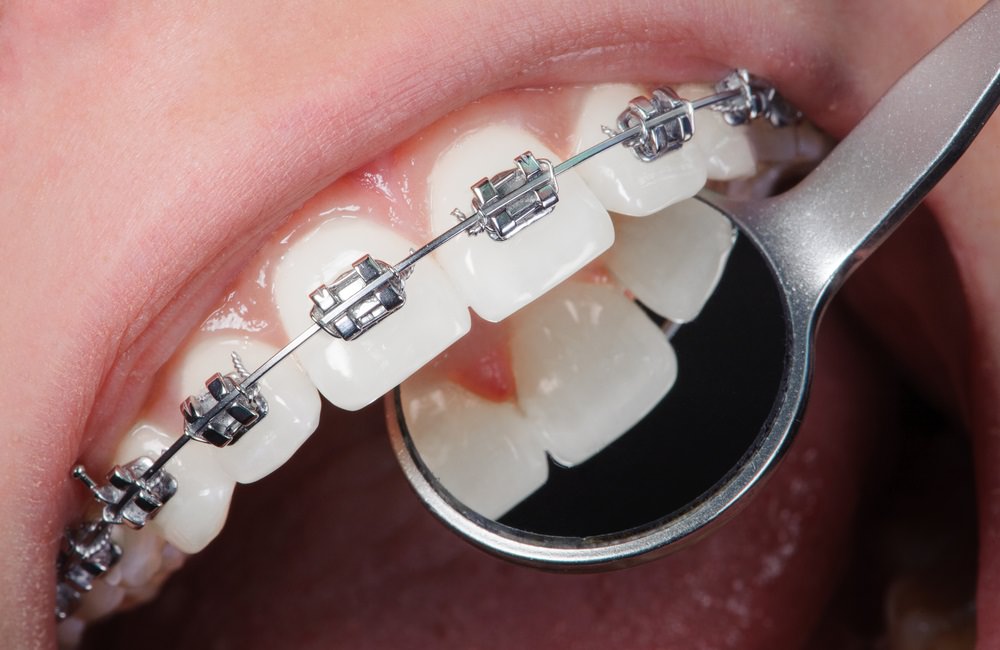
Traditional dental braces
What Extra Training Do Orthodontists Undertake?
It is useful to understand what an orthodontist can help you with and what training they have.
Orthodontists initially undertake the same training as dentists, so all orthodontists have trained as dentists.
They then do a few years of clinical dental practice and can apply for further study in a “Speciality Training Programme for Orthodontists”.
This varies in the states of Australia but it is usually a three year full-time postgraduate degree from an accredited dental University.
The orthodontist will complete a five year period of study and training to become a dentist followed by three years of study and training to become an orthodontic specialist.
The specialist training must complete over 6,000 hours of both theoretical and clinical training, complete a thesis and sit many examinations to determine their competency and understanding.
Can Regular Dentists Perform Orthodontic Treatment?
Dentists are trained in all aspects of treating the teeth, jaws and the surrounding structures.
As a general dentist, there are many courses available if the dentist wishes to understand the various disciples as an example Root canal therapy which is also a specialty but a dentist may perform the teeth that they have had training, research and experience to do.
The more difficult cases may be referred to the specialist.
The same can be said for taking teeth out, a dentist may perform to the best of their abilities and then if the case is too difficult the patient is referred to a specialist.
As a dentist progresses in their treatment of children and adults a deeper understanding is sought and further study can be undertaken.
The dentist is in a position to monitor and guide the growth of the child’s teeth.
It is imperative that a dentist not neglect any potential problems in the misalignment of jaws or teeth which could cause damage or misalignment to the surrounding structures.
The dentist is also in the prime position to continue to treat patients after they had sought specialist care of an orthodontist.
They will be able to monitor and assess procedures undertaken by a specialist orthodontist and monitor which procedures are more successful than others.
As always the care of the patient is the main concern of both the dentist and the specialist.
A relationship where the dentist and the orthodontist are in correspondence and close contact with each other to ensure that the patient receives the very best of care is always what you should look for.
Why Do Some People Wear Braces For Six Months And Others For More Than A Year?
Braces can be daunting, as many are unsure how long they may need to wear them for.
This can be a long commitment for many children, teens or adults when considering this option for realigning teeth.
Treatment does vary from case-to-case, however, a ballpark timeframe is three years.
You can get braces at any age, up until around 80 if your teeth and gums will allow the pressure.
Factors To Consider When Thinking of Undergoing Orthodontic Treatment
There are 5 factors to consider when orthodontic treatment is considered.
- Age, Growth and Shape of the Face
- Cost
- Airway, Allergies and Sleep
- Compliance
- Retainers – Will you follow through to ensure that your treatment was a success
Orthodontic treatment is no longer just so that you can look better.
Your Lower Jaw Joint called Temporo Mandibular Joint has to be considered as the position of this joint is dictated by the position and growth of the Lower Jaw it must be evaluated and allowed to grow into the optimal position.
Many headaches symptoms, neck pain and debilitating problems later in life can be offset with the correct treatment early in life.
The position, size, function and shape of the tongue in relation to the airway.
The Tongue is imperative for the correct feeding of the baby and the formation and function of the inside of the mouth is dependent on the tongue.
Tongue-tie evaluation and swallowing habits may offset a multitude of problems later in life.
Is Orthodontic Treatment Painful?
A common complaint from many people with braces is that they are painful, leading people to second guess orthodontic treatment.
As the braces are put onto the teeth and the wire begins to move teeth then the ligaments holding the teeth into the socket and on bone is stretched.
This ligament as it stretches may cause some pain but this usually lasts only for the first week and maybe felt again when the arch wires are changed.
Most orthodontic treatment is not painful however common discomfort from braces when fitted and tightened include;
- Sore teeth when eating or in general
- Sore gums
- Cuts on the tongue if moving it around the braces
- Scrapes of sores inside the cheeks due to the rubbing of the metal brackets
Do You Need Orthodontic Treatment In Every Instance?
A common question asked is whether or not orthodontics are necessary or purely cosmetic.
This isn’t a simple question as it really depends on the complexity of the concern.
Orthodontic treatment is optional when you purely want your teeth to look better cosmetically, yet your bite and alignment are functioning well.
In these instances, orthodontics is purely optional and for the confidence or wants of the patient.
However, orthodontic treatment is a must when there’s a significant or moderate problem that will not get better on its own.
This includes problems such as underbites, overbites, crossbites, painful misalignments or treatment when teeth are positioned in a way that will lead to recession of the gums.
Age is also an important factor as children’s teeth are still developing and their jaws still growing, meaning that overcrowding can get much worse or smaller issues may resolve themselves.
Most orthodontists will recommend early treatment rather than later when an adult’s issues are more complex and the teeth have been in a poor position for many years, leading to longer treatment times.
It’s important to understand that orthodontics is sometimes necessary for health reasons.
Orthodontics in young people can prevent future problems such as severe misalignment, gum recession, decay from overcrowding (and not being able to brush well) and other oral health concerns from misaligned, overcrowded teeth or misaligned bites.
Does Dental Insurance Cover Orthodontic Treatment?
Most Australians understand that orthodontics isn’t cheap, therefore, many will look to their private health insurance to provide some form of rebate.
The good news is that, yes, some levels of health cover do provide a rebate for orthodontics.
It’s important to understand what your health fund and level of cover will provide you with.
Extras covers don’t always provide you with orthodontics cover, so you should always check before committing to an extras cover.
You should also understand your rebates.
For example, a premium policy may pay you more than $2500 for orthodontics, while lower levels of cover will only give you a rebate of a few hundred dollars.
When looking into signing up for a health fund, it’s important to look at the cost of your premiums versus the approximate amount you may need to spend on orthodontic treatment.
You should also understand your waiting periods and the maximum you can claim in a year.
Most premium private health insurance will cover braces, plates, headgear and other functional appliances. They will also oftentimes cover some surgeries.
You can find out more on this topic by reading our post Dental Insurance – The Australian Guide.
Conclusion
Orthodontics is not purely for cosmetic purposes and are often required for preventative and corrective measures.
You should always visit a trained orthodontist for these services and understand what your health fund will provide you in terms of cover and rebates.
Your dentist should always refer you to an orthodontist for these types of treatments and you can talk more about your various options and treatment plans once you’ve had your initial consultation.
What orthodontic treatment interests you?
By Dr. V
Created at October 13, 2020, Updated at January 25, 2025


